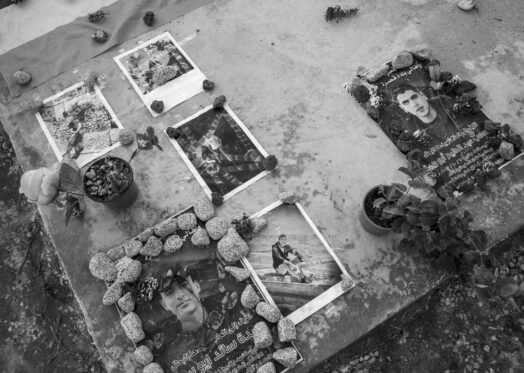The third front

As I write the hudna, the temporary truce brokered by Qatar is holding: Hamas is releasing hostages in exchange of Palestinian prisoners and badly needed humanitarian aid, slowly trickling through the Rafah crossing. What next? Prime minister Benjamin Netanyahu has vowed to resume the fighting in Gaza “with full force”, ignoring the mounting international pressure and the intense diplomatic efforts to reach a permanent ceasefire. Everybody knows, even in Israel and the US, that there’s no military solution to the conflict. But Netanyahu, who has constantly worked to derail the Oslo agreement and prevent the birth of a Palestinian state, has nothing to offer but war: a war of annihilation. Facts are clearly emerging through the propaganda fog.
Since October 7th the Israeli air and ground forces have hit more than 15,000 targets, including hospitals, schools, mosques and churches; the reckless use of US-made 2,000 pound bombs in dense urban areas resulted in the massacre of more than 14,000 civilians, mostly women and children; entire neighborhoods have been razed and one million residents were forced to flee to the already overcrowded southern Strip, where living and health conditions are catastrophic. “In Gaza” writes the New York Times “people have been killed more quickly than in even the deadliest moments of the wars in Iraq, Syria and Afghanistan”. And the worst – if the truce collapses – is yet to come.
The hudna, in any case, does not apply to the West Bank, where the army has closed off movements between the cities and sent troops, tanks and bulldozers to raid and disrupt the refugee camps. In the past seven weeks some 200 Palestinians have been killed and at least 3,200 have been arrested, mostly without charge. With Gaza on the brink of destruction and the Lebanese border on fire, a third front has already flared in the occupied and increasingly colonized Arab territories, which right wing Jewish settlers, revisionist zionists and Netanyahu himself consider part of a biblical Eretz Yisrael, “from the Jordan river to the sea”.
Well before October 7th armed fanatic settlers, protected by the police and the army, had stepped up their assaults. Now they know they have a license to kill.
South of Hebron, on a rocky hill close to a new settlement, 55 years old Mustafa, a shepherd, sits with friends and relatives at the fireplace. Cups of hot tea are passed around. Women cook the bread in a clay oven. Toddlers peek out from the tin-roofed shack. The five bleating sheep are already in the stall. “We have lived here for generations” says Mustafa. “But they want us to go away, they want our land. See how they hit me!” He unfurls his white headscarf and bends forward: two large wounds are still bleeding. “I was lucky. Yesterday my nephew was shot in the chest in cold blood. We called the police, but no one came”.
The settlers enjoy absolute impunity: few cases of violence are investigated and never prosecuted. They even share their deeds on Telegram. I saw a video in which men in Israeli military uniforms laugh while beating and insulting blindfolded Palestinian boys. In another clip some settlers play music and cheer as they crush with their jeep the naked body of a slain farmer.
Even the annual olive harvest is a bloody trap in the West Bank. I drive to Qusra to meet Ibrahim on the roof of his house. The village is surrounded by settlements, built on confiscated land, protected by stone walls and barbed wires. “Our olive trees are in the valley below. We went down with our children and wives and we started picking. Soon after I saw the settlers coming. When we were running back to safety I heard the shots. My brother was killed, he was 22. And three other boys”. They are now buried together in the small Qusra graveyard, under a gray concrete tombstone on which friends have laid some flowers and a Palestinian flag.





